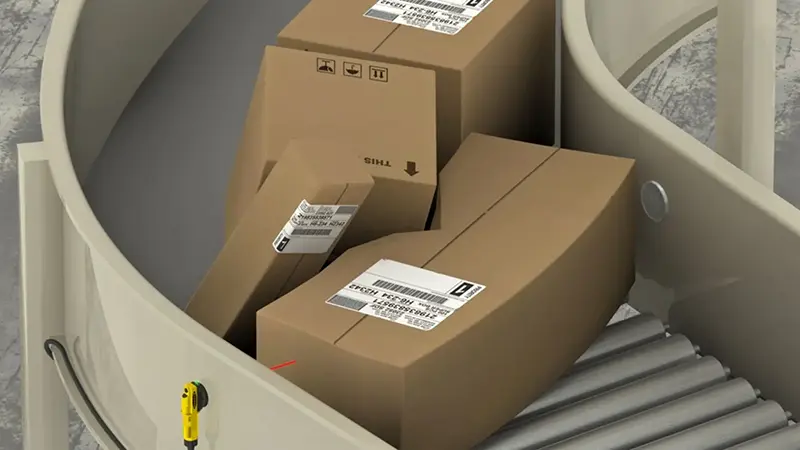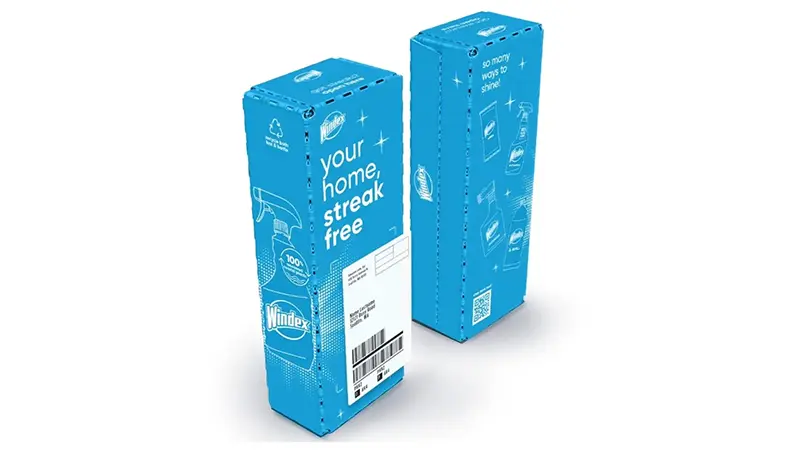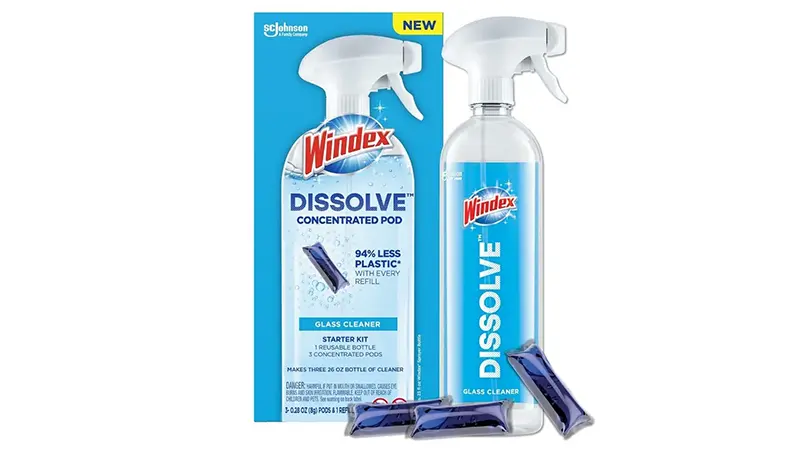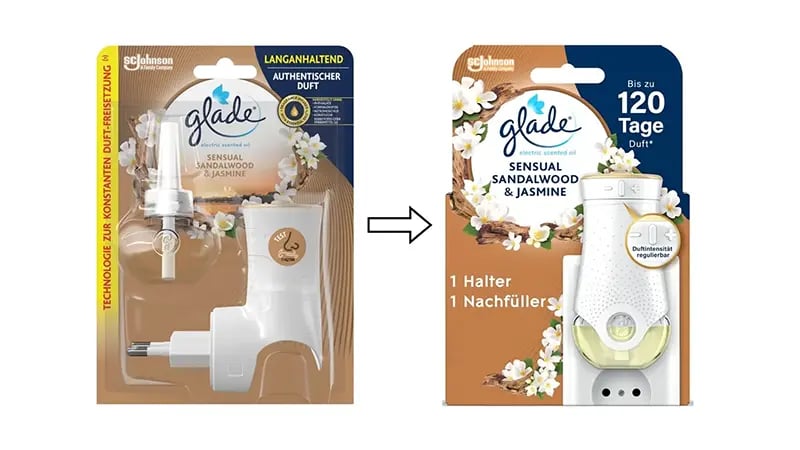Thinking Outside the Box: How SC Johnson is Redesigning Packaging to Reduce Plastic Waste and Promote Circularity
Many factors lead to plastic packaging waste before products and items enter our stores, homes and offices. However, despite all these competing factors, leading companies like SC Johnson are working toward reducing packaging and helping ensure it doesn't end up as pollution.
For many of us, the typical shopping experience often leads to a common frustration: an excess of plastic bags and products wrapped in plastic packaging. Online orders frequently arrive in oversized boxes filled with additional packing materials such as bubble wrap or rapid-fill bags. Whether it's groceries, household items or clothing, the result is consistently the same – a plastic mess.
Consumers are increasingly concerned about the environmental impact of packaging. A McKinsey survey of American consumers found that 43% consider the environmental impact of product packaging to be extremely or very important. The Pew Research Center also found that nearly three-quarters of Americans are actively trying to reduce their dependence on single-use plastics. According to The Economist Intelligence Unit, searches of sustainable goods terms have surged globally by 71% since 2016. Clearly, it's a frustration that consumers want to avoid, and for good reason.
Research shows that globally, only two to 14 percent of packaging materials are recycled. The rest ends up in landfills, or worse, in our yards, parks or the oceans as pollution. A staggering 8 million tonnes leak into the ocean yearly — and that number is rising. Increasingly, studies are showing that marine litter directly contributes to microplastic build-up in ecosystems, creating potential risks to wildlife and human health.
So why is there so much plastic packaging? The amount of plastic used and its reasons often come down to product design, shipping methods and the availability of systems for collecting and recycling plastic.

Unpacking the pervasiveness of plastic packaging
Plastic packaging offers a significant advantage to marketers because it can be molded into different shapes and sizes, and clear plastic packaging lets customers see the product before buying, which is great for decision-making. While this versatility helps companies create eye-catching packaging that resonates with customers, it can also lead to increased waste.
For example, plastic is a common material used in thermoforming, a manufacturing process where a plastic sheet is heated to a pliable temperature, formed to a specific shape in a mold, and then trimmed to create a usable product. It's commonly used to produce packaging, trays, containers, and other plastic products. Sometimes it is also is wrapped around a carboard insert, creating a mixed material situation that cannot be easily recycled.
Some companies opt for elaborate packaging to enhance the customer experience or increase the product's appeal on store shelves. For instance, black plastic is frequently chosen for its aesthetic appeal and perceived high quality. However, much black plastic is undetectable during automated recycling processes because near-infrared sorting scanners fail to detect carbon black, the most common pigment used for dyeing plastic black. Consequently, these items typically continue along the conveyor belt to be sent to landfills or incinerated instead of being captured for recycling.
Another consideration for companies is efficiency and product safety during transportation. Delivering efficiency involves factors like weight, size and space, where even a slight weight difference per package can lead to significant savings when scaled up (think fewer plane flights and reduced fuel consumption for both planes and vans). “Downtime” – when the processing line stops – is another efficiency concern. Small packages can frequently cause conveyor belt jams, resulting in delays. Companies often choose to minimize this risk by packing smaller items in larger boxes so they remain in contact with multiple rollers at all times. However, this frequently leaves large amounts of unused space that must be filled with materials like bubble wrap or packing peanuts to ensure the product arrives undamaged.

Even when packaging is designed to be more recyclable, the lack of proper recycling infrastructure can still make it hard to collect and recycle. Plastic is particularly challenging and costly to collect and sort because there are many types of synthetic materials, and they can't be melted down together. Limited collection facilities, inefficient sorting processes, transportation difficulties and a lack of market demand for recycled plastics hinder recycling efforts. And even when plastic is recycled, companies often prefer making new plastic because it's cheaper and simpler.
The good news is that despite all these competing factors, there are meaningful actions that companies can take to reduce packaging and help ensure it doesn't end up as pollution.
How SC Johnson is rethinking product packaging
In 2017, an Ellen MacArthur Foundation report on plastics showed that about 30% of plastic packaging will never be reused or recycled without fundamental redesign and innovation. This has led to a strong push among leading companies to fundamentally rethink how products are designed and packaged for consumers, including the types of materials used or whether a package is needed at all.
SC Johnson recently tackled the issue of over-packaged shipments by partnering with Amazon for a new initiative called “Ships in Product Packaging.” This initiative focuses on the Windex brand, where instead of arriving in an oversized box with extra plastic, Windex now comes in a box specifically designed for the product's size, reducing waste and the risk of breakage. Since implementing Ships in Product Packaging for Windex in September 2023, SC Johnson has used 58 metric tons less paper (equivalent to saving one million trees) and four metric tons less plastic (equivalent to saving 450 million plastic bottles).

Innovative products are emerging that replace single-use packaging by shipping only active ingredients that can be used in reusable dispensers, reducing the need to buy larger refill bottles. While SC Johnson has been offering concentrated refills for over a decade, in 2022, they introduced DISSOLVE™ Concentrated Pods for several of their cleaning products. The pods dissolve in tap water, making refilling an empty spray bottle easy. This approach avoids purchasing new plastic spray triggers or liquid concentrate bottles, which means using 94% less plastic than a similar ready-to-use product.

Experts say reducing plastic pollution will involve, in part, replacing products and packaging currently made from plastic with alternative materials. However, finding suitable alternatives can be difficult as other packaging materials may also pose recycling challenges, and some have drawbacks compared to plastic. Regardless of the material used, it's essential to consider what happens to the packaging after it's no longer needed.
For instance, consider those hard-to-recycle thermoform packages? SC Johnson is taking action by swapping out blister thermoforms in its Duck and Glade brands' packaging for paperboard options. Paperboard not only reduces plastic usage significantly but is also fully recyclable. The outer cardboard wrap can be easily removed and separated, simplifying recycling.


Reducing the amount of plastic packaging and keeping it from becoming plastic pollution is a complex problem that includes systemic changes beyond any single company's efforts. And while companies like SC Johnson are making real progress, there is still a long way to go
Minimal progress for minimal packaging – but the future is bright
Five years after the launch of its Global Commitment, which boasts over 1000 signatories and comprises 20% of the global plastics industry, The Ellen MacArthur Foundation released its progress report. The report indicates that despite some noteworthy advancements, businesses are largely failing to meet the majority of the 2025 targets. These include eliminating problematic and unnecessary waste, transitioning from single-use to reusable formats where feasible, reducing the use of virgin plastics, increasing recycled content and ensuring all packaging is recyclable, reusable, or compostable. News like this may not seem encouraging, but it's important to recognize that actions taken thus far are making a difference.
When the Global Commitment initiative was first launched, there was limited activity on plastic reduction and circularity. However, over the past five years, despite challenges, members of the initiative have notably surpassed their peers in reducing plastic waste. They have significantly decreased their use of problematic and avoidable plastic items, stabilized their consumption of virgin plastics and more than doubled their use of recycled content. All things considered, there is strong evidence that the efforts made over the last five years represent a significant step forward.
Furthermore, we have learned that progress in addressing global plastic waste is achievable, and we now understand the primary obstacles preventing further change. While businesses have a significant role, the real breakthrough must come from government action. Encouragingly, this area has considerable momentum, ranging from local city initiatives to discussions about a Global Treaty to End Plastic Pollution.
No one wants a ton of unnecessary plastic packaging every time they make a purchase. While there isn't one answer, ongoing innovation from businesses and stronger government regulations can keep driving new packaging ideas – and closer to the day when “outside the box” means more than just a way of thinking.
